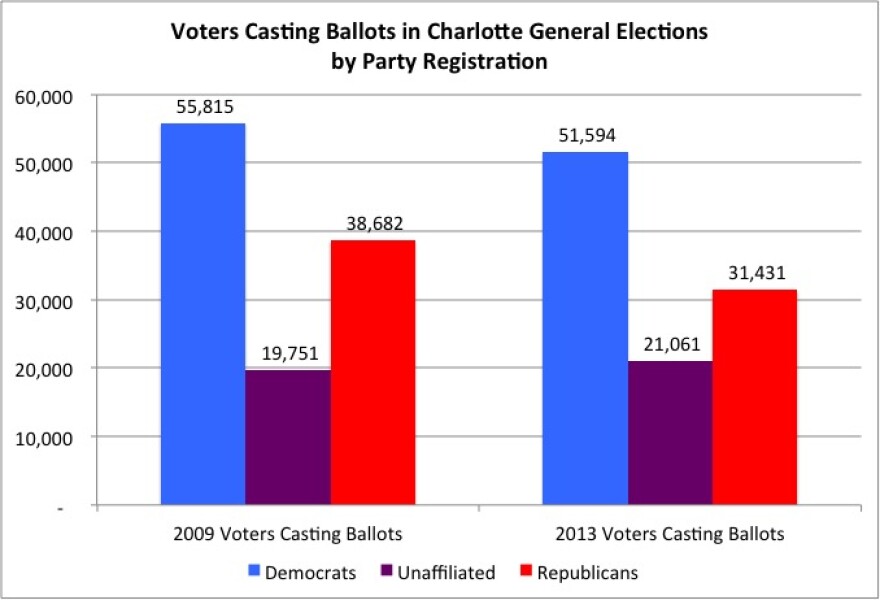The voting statistics clearly favor Democrat Jennifer Roberts over her former city council colleague, Republican Edwin Peacock, in the race for Charlotte mayor.
Since 2009, the city’s Republican registration has gone from 27 to 23 percent. The percentage of Democrats have gone up 1 point, to 49 percent. And, unaffiliated voters now outnumber Charlotte Republicans, representing 28 percent of registered voters – a 5 percent increase.
Odd-year elections are notorious for dismal voter turnout rates. In 2009, the overall turnout for Charlotte voters was 22 percent; in 2013, it was 18 percent.
But more important are the turnout rates among the three partisan voting blocs.
As one would suspect, partisan registered voters turn out to vote in Charlotte’s odd-year elections at higher rates than non-partisan/unaffiliated voters. But even with the greater turnout by GOP registered voters, the dominance by Democrats has constructed a pretty significant hill for the opposition to climb.
Taking these voters who did cast ballots, one can construct the likely ‘electorates’ for these competitive elections, in comparison to the eligible voter pool.

Both Democrats and Republicans saw a drop in registered voters who turned out, but Republicans saw a greater decrease (19 percent) from 2009 to 2013 than did Democrats (who dropped 7 percent) between the two elections. Bucking the trend were unaffiliated voters casting ballots, who went up 7 percent.
It is also important to remember that partisan voters typically will vote at levels of 90 percent-plus for their party’s candidates.
In terms of race and turnout, in both 2009 and 2013, white voters were 59 percent of all registered voters, while black voters were a third. The turnout rate, however, for both groups was slightly different in 2009 (24 percent for white voters and 22 percent for black voters), while in 2013, both groups had a 17 percent turnout rate.
In terms of gender, women were 55 percent of the registered voters and of those casting ballots in both 2009 and 2013; both men and women had turnout rates of 22 percent in 2009 and 16 percent in 2013.
Grounding an assumption on equal turnout rates, especially across party lines, may lead one to assume equal parity in election performances; however, the numbers indicate otherwise.
Unless there is a significant numerical shift that occurs between now and November, the likelihood is that the Democratic dominance remains in Charlotte.


